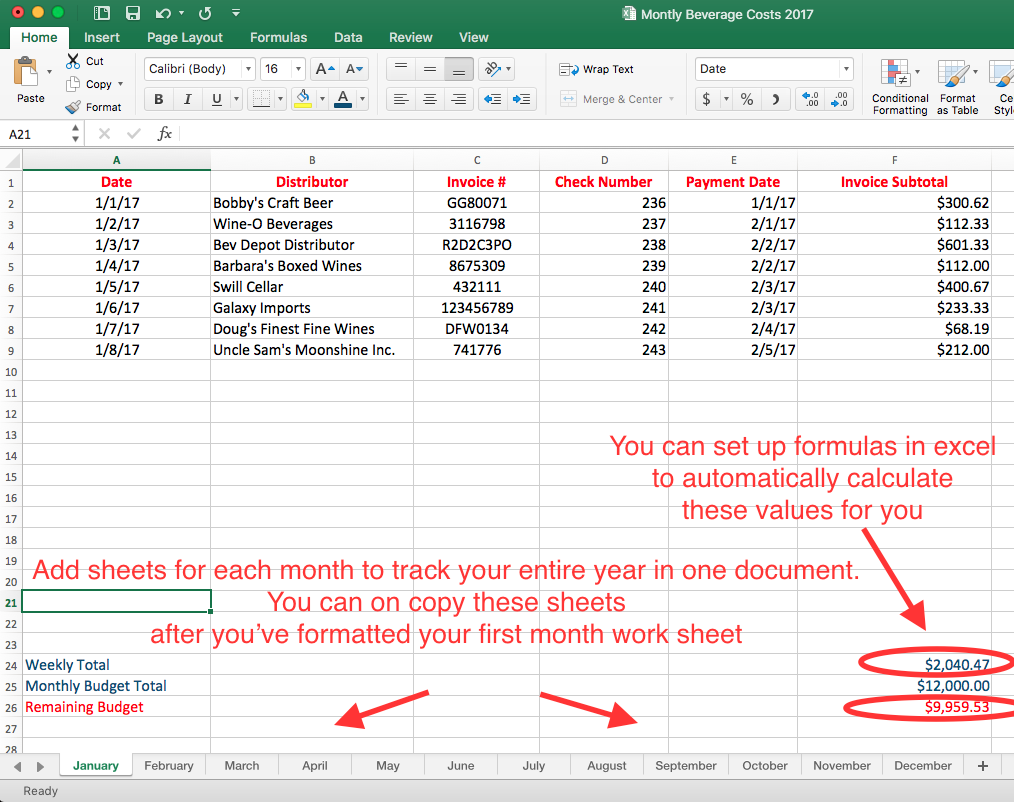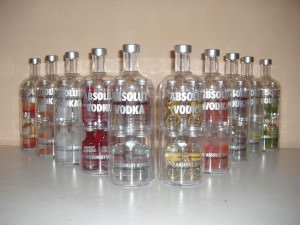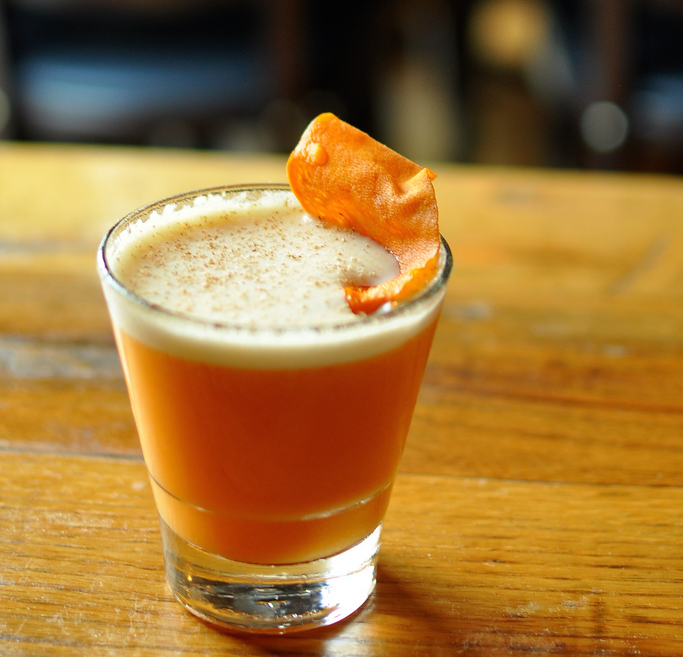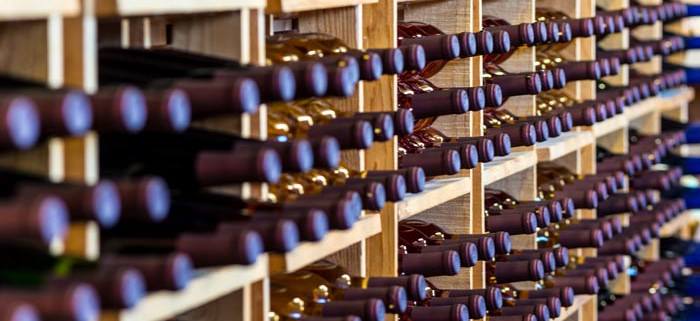What’s The Point Of Taking Inventory, Anyway?
Taking beverage inventory stinks. No one except a certain Sesame Street muppet enjoys the act of counting things. Unless you’re counting your money and you’ve got loads of it. But it’s necessary for a well-run bar or restaurant to do it. But so many restaurants aren’t properly taking inventory. However, there are ways to make inventory work better. Let’s look at some practices that will make inventory easier in the long run and give your bar or restaurant a big advantage over other bars and restaurants that are clueless about their counts. These tips can make your beverage program more profitable.
Looking to make inventory worth your time? Download Uncorkd’s Bottom Line Inventory Handbook to turn inventory into more revenue.
1. Catalogue Your Weekly Purchases
Do you record and catalogue every purchase invoice you receive? It sounds obvious, but many bars and restaurants don’t track their orders as they come in. It’s a very easy step that makes you aware of what you’ve spent on weekly and monthly basis.
(Uncorkd previously touched on this topic in our post, 5 Smart Ways to Lower Alcohol Costs to 18%, but we’ll dig deeper here.)
It’s smart to track your alcohol costs in a single location. Many restaurants use excel to track their inventory and purchases. So we’ll give you some tips for tracking this information and keeping accurate records with excel.
- Set up an excel workbook to track your orders for each week of the month. You can set up a single workbook to record this information. (See image below)
- Add individual sheets for each month and track a full year’s worth of invoices in a single document.
- Important information to record:
- Date of order received
- Distributor
- Payment date
- Check number or payment number
- Subtotal on invoice

Excel Formula Cheat Sheet
The latest version of excel makes it easy to use simple formulas. But it can get confusing at times, especially if you’re new to excel. Here are the formulas we used to calculate our expenses and budget totals in the example above. These are the basic formulas, but remember to adjust the information to match the correct cells for your spread sheet.
Weekly Total: =SUM(F2:F23)
Monthly Budget Total: This is a fixed number you will input at the start of every month
Remaining Monthly Budget: =SUM(F25-SUM(F2:F23))
These two formulas will help you track your alcohol costs and make sure you stay within your monthly budget.
Get Ahead of Your Competitors With Uncorkd’s How To Increase Beverage Sales By Modernizing Your Bar
2. Track Bottle Depletion Each Night
A great way to keep an ongoing and accurate inventory is to have your track bottles that were poured out, or “killed” during their shift. Whether liquor or wine, keeping a running tally of what bottles you sell through will help keep an accurate bottle count through out the week. This is a great way to prevent ordering unnecessary items that overcrowd your liquor room and gives you a better idea of what to order.
It’s a simple strategy that will require your staff to stick to the procedure during their shifts. It’s easier to hold your staff accountable to this if you enforce a checklist of duties that must be completed before a server or bartender ends their shift. It won’t always work perfectly, but nothing every does in a restaurant. 
Tips for tracking bottle depletion:
- Have your staff compile a list of every bottle killed during service. The closing manager or the next day’s manager can update your inventory.
- Hang a dry erase board inside the door of one your backbar cabinets for bartenders to track bottle kills
- For wine, post a sheet at service stations for servers to fill out when they sell a bottle of wine.
3. Assign Dollar Values To Standing Inventory
When most bars and restaurants perform inventory, they are simply counting the number of items they have in-house. But this strategy leaves out crucial information: how much money do you have tied up in current inventory? That is actually the most useful information you can pull from inventory. Nothing motivates people to take action more than seeing how much how many dollars you have sitting on your shelf.
This is especially useful if you take our advice from the section above and keep a running tally of your inventory. A useful tip is to record the date of your last full beverage inventory along with the last inventory quantity and total value so you can track your progress when you’re attempting to sell through inventory.
Use this excel image as an example:

Excel Formula Cheat Sheet:
Use this formula to track your Total Value in excel: =SUM(B2)*(C2)
4. Track Cocktail Sales Through Your Point of Sale System

Cocktails with lots of ingredients can make tracking inventory difficult. This can cause a bar to run out of a liqueur or amaro used in its best selling cocktail at the worst time, like Friday night. It’s easier to account for base spirits in cocktails, but when it comes down to the ingredients that only require a 1/2 or 3/4 ounce pour, it’s much easier to lose track of when to order these secondary ingredients.
Tracking sales for each cocktail on a nightly or weekly basis through POS reports will give you a good idea of how to order ingredients for cocktails and what quantities to set for pars.
A good trick to help keep track of secondary ingredients like liqueurs or amaro is to do the math on how many cocktails can be made per bottle of mixer. If you know that you use .5 oz of St. Germaine Elderflower Liqueur for your top selling vodka cocktail, then you know you will go through one bottle for every 50 cocktails sold. You can look at average sales per week or track numbers after each shift, either way you will get a better idea of when to order secondary ingredients and if it’s better to order by the case or by individual bottles.
5. Always Take Action With Your Inventory Numbers
We started this post by saying inventory is necessary for well-run bars and restaurants to take. But that is true only if management is taking action on the numbers they collect during inventory. Too many bars and restaurants take inventory but don’t actual put those numbers to good use.
This is why finding out the dollar value of your standing inventory is so important. It helps you better understand what actions you should prioritize if you want to lower your costs and run a more successful business. Money is a great motivator. Remember, your inventory is more than just a bottle count. It’s an insight into costs that can put your business in a bind, as well as look at what your sales potential is.
Taking inventory should always involve insights into how to run a more effective beverage program in both the short and long term.
- 5 Fall Cocktails to Capture the Flavors of Autumn - September 26, 2018
- How Restaurants Can Ignore Sales and Increase Profits - May 9, 2018
- 2018 Spring Wine Trends - April 18, 2018









